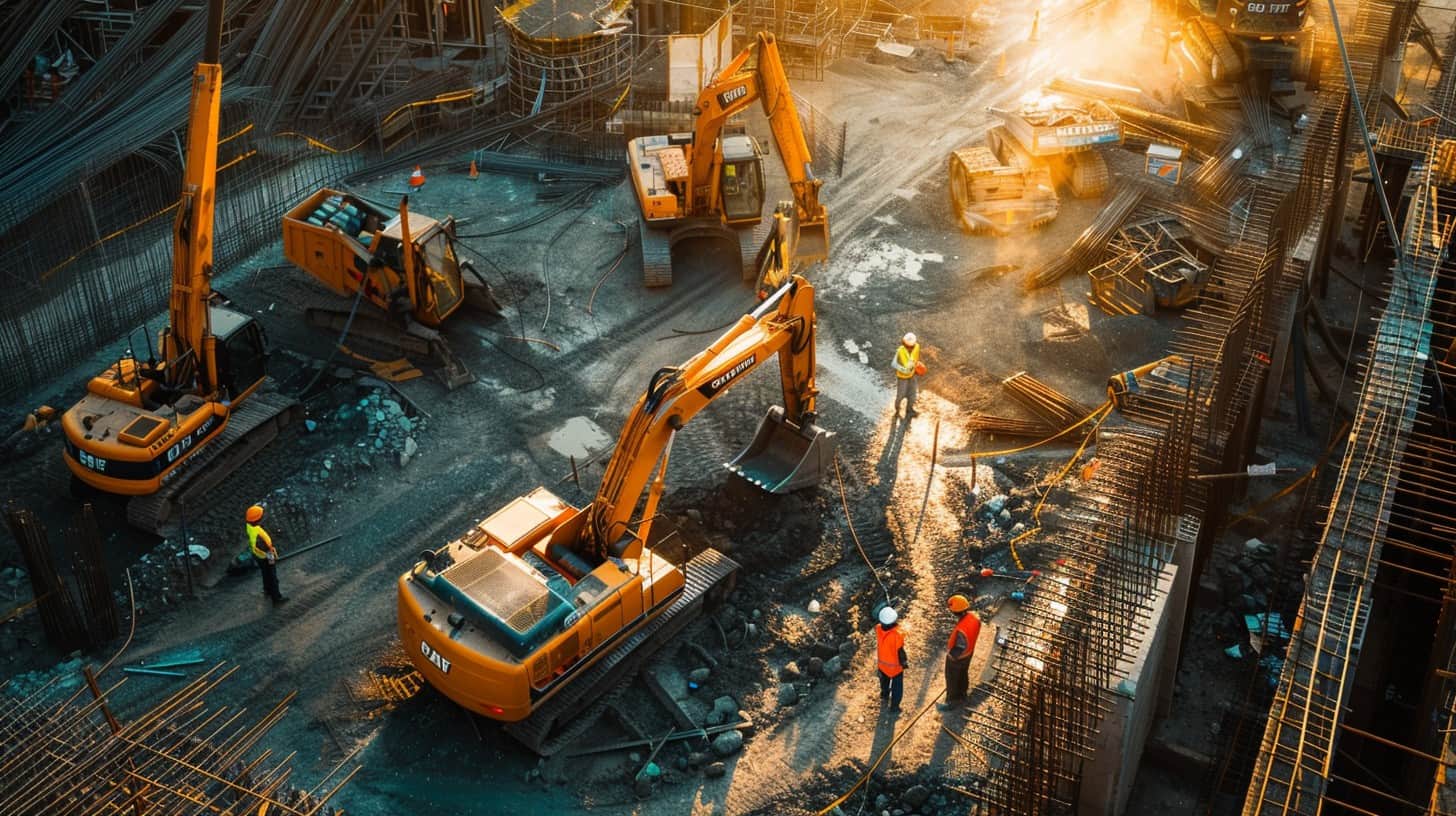Keeping construction sites safe is a big worry for many. Did you know that construction workers face some of the highest injury risks on the job? This article will guide you through eight key ways to protect them.
Stay safe out there!
Key Takeaways
Wear the right Personal Protective Equipment (PPE) like hard hats, safety goggles, and gloves to shield against common construction injuries.
Fall protection strategies, including using safety nets and guard rails, are crucial since falls make up half of all accidents on U.S. construction sites.
Safety training can significantly reduce workplace mishaps by teaching workers vital skills such as CPR and how to handle emergencies.
Keeping a tidy job site reduces risks of slips, trips, and falls while ensuring tools are easy to find and hazards like loose wires are managed properly.
Reporting safety incidents immediately helps prevent worse problems; employers should create an environment where workers feel safe to report dangers.
Table of Contents
The Critical Nature of Construction Safety
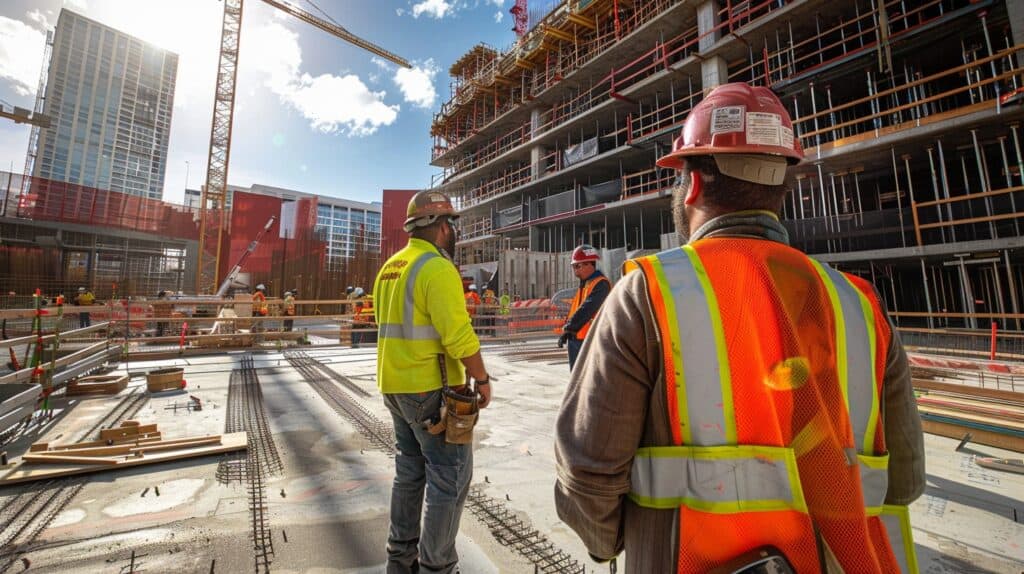
Construction safety hits close to home for anyone who’s ever stepped foot on a job site. I’ve seen firsthand the difference good practices make. Imagine gear like hard hats and earplugs as knights in shining armor, guarding workers from falls or sudden noise that could leave ears ringing.
These aren’t just tools; they’re lifelines that keep dads, brothers, and friends safe so they can come home every night.
Falls claim half of all construction mishaps in the U.S., turning ladders and scaffolds into potential traps without proper fall protection methods like guardrails or fall arrest systems.
Every hammer, saw, or drill at a site has its own tale of risk—defective ones often tell stories of hurt fingers or worse. It’s not about filling out forms or ticking boxes; it’s making sure everyone on that ground knows how to spot danger and dodge it.
Safety isn’t a bonus—it’s the foundation that lets workers build skyscrapers without becoming skydivers themselves.
Key Safety Tips for Construction Sites
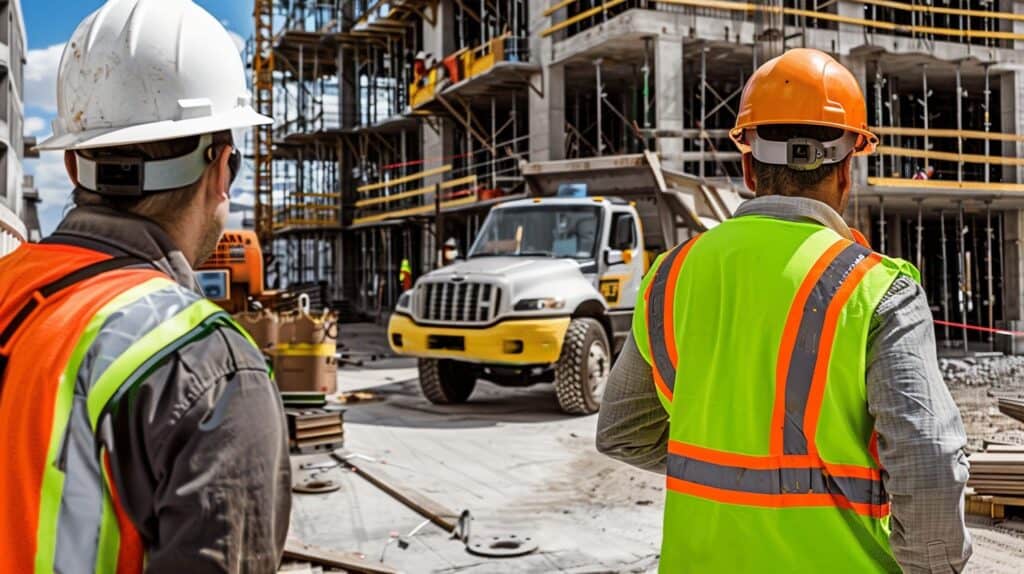
Walking onto a construction site is like stepping into a world where danger hides in plain sight. It’s not just about wearing hard hats or watching your step; it’s about knowing the ropes from A to Z to keep everyone safe and sound.
Risk Management Systems in Construction
Risk management systems in construction are like the playbook for keeping everyone safe on a job site. They set up the rules for what to do if things go south, from dodging falling tools to steering clear of live wires.
I’ve seen firsthand how these plans can turn a chaotic moment into a well-handled drill. It’s all about spotting risks before they bite and having a game plan ready.
Safety training sessions and toolbox talks play big parts here, too. Think about it: knowing how to wear your hardhat properly or understanding hazardous materials labels can make all the difference.
And with stats showing that defective tools and inadequate training are leading causes of injuries, it’s clear these systems aren’t just fancy paperwork—they’re lifelines.
A good risk management system turns chaos into calm—it’s the backbone of every safe construction site.
Effective Communication for Safety
After setting up a risk management system, it’s crucial to keep everyone on the same page. Think of effective communication as the glue that holds safety together at a construction site.
Clear chats and regular toolbox talks make sure every worker knows what dangers lurk around them and how to avoid getting hurt. It’s like having a map in a jungle; you need it to find your way without running into trouble.
Using simple tools like hazard communication signs and clear, loud announcements can save ears from noise-exposure or lungs from dust clouds. Imagine playing telephone but with vital safety instructions—you wouldn’t want any part of the message lost in translation.
So, we shout out warnings over the roar of machines and flash signals that even someone wearing googles would see clearly. This keeps slips, trips, and falls at bay and ensures that hearing loss doesn’t become part of anyone’s job description.
Fall Protection Strategies
Keeping workers safe at heights is a big deal. Half of the accidents on construction sites in the U.S. are falls. That’s why having solid fall protection strategies is a must. Here’s how to stop falls before they happen:
- Use safety nets below high work areas. They catch folks if they slip, acting like a goalie does for soccer balls.
- Install guard rails around roof edges and open holes. Think of them as fences that keep you from taking a tumble into trouble.
- Make sure everyone uses harnesses and lifelines for jobs way up off the ground. It’s like being tethered to something sturdy so you don’t float away in space.
- Cover all holes and openings when not in use. Imagine suddenly walking on glass, only there’s no glass – scary, right?
- Keep walkways clear of debris and tools. Tripping over a wrench isn’t just painful; it can send you falling from heights.
I remember this one job I was on – we set up all our safety gear just right, but someone left tools scattered around a walkway up high. My buddy stepped back not seeing them, tripped, but thank goodness for the harness he was wearing! It stopped what could have been a nasty fall.
Next up, let’s talk about how important it is to wear your hard hat and other personal protective equipment (PPE) on site.
Personal Protective Equipment (PPE) Usage
After we’ve tackled how to stop falls on the job, let’s gear up right. Making sure you’re dressed with the correct personal protective equipment (PPE) is just as key for your safety.
Here’s how to do it:
- Always start with a hard hat. This isn’t just any hat; it’s your first line of defense against falling objects or bumping into unseen hazards.
- Protect those eyes with safety goggles or glasses. Whether it’s flying debris, splashes, or dust, keeping your eyesight safe is a must.
- Don’t forget gloves. Depending on the task, pick from heavy-duty leather for handling rough materials or chemical-resistant types for dealing with hazardous substances.
- Steel-toed boots are non-negotiable. They guard your feet from heavy objects that might decide to take a tumble.
- Cover those ears with earplugs or earmuffs when noise hits high decibels. Preventing hearing damage keeps your ears sharp and functional.
- Dust masks or respirators are essential when air quality is poor, protecting you from inhaling harmful particles.
- Reflective vests make sure you stand out in busy sites and during night work, keeping you visible to vehicle operators and fellow workers.
- Finally, if you’re working at heights or in tight spaces, harnesses and lifelines are your best buddies to prevent falls or being stuck.
Wearing the right gear can be the difference between a close call and a call home from the hospital. Keep this checklist handy and stay safe out there!
Equipment Safety Practices
Keeping your tools in check is like tying your shoes before a run – it prevents trips and falls. On a construction site, managing equipment safely means no shortcuts. Here’s how to keep everyone safe and gear in top shape:
- Regularly check all tools for damage. If it’s broken, fix it or toss it. Working with damaged tools is like playing with fire.
- Keep electric devices dry and away from water. Water and electricity are a dangerous mix.
- Use the right tool for the job. A screwdriver is not a hammer.
- Store equipment properly after use. A clean space is a safe space.
- Follow manufacturers’ instructions for every tool and machine on deck.
- Make sure all workers wear protective gear when using heavy machinery.
Next up, let’s steer our focus towards vehicle safety on the construction site.
Construction Vehicle Safety Measures
Driving a vehicle at a construction site can be as tricky as walking on a tightrope. One wrong move and the consequences could be dire. That’s why taking safety measures for vehicles on site is not just smart; it’s critical. Here are some ways to keep things rolling safely:
- Check your vehicle before you start the day. Just like you wouldn’t skip breakfast, don’t skip this step. Ensure all parts are in working order, especially the brakes and lights.
- Use whip lights on taller vehicles. These tall, bright flags make sure your vehicle doesn’t become a ninja in the dust – seen one moment and gone the next. My first-hand experience taught me that visibility is lifesaving, especially during early mornings or late evenings when the light plays tricks on your eyes.
- Keep speed limits religiously. This isn’t a race track; it’s a construction site. Treat speed signs as your best friend who tells you to slow down for your own good.
- Communicate like your life depends on it because it does. Use radios or hand signals to talk with team members, making sure everyone knows where you’re headed.
- Wear seat belts at all times. It might seem overkill, especially if you’re just moving from one spot to another nearby, but accidents don’t send warnings.
- Make eye contact with pedestrians and other workers before moving your vehicle. If eyes meet, chances are better they know what you’re about to do.
- Plan routes carefully to avoid reversing as much as possible. Reverse movement is when most accidents happen because it’s hard to see everything behind you, even with mirrors.
- Load vehicles properly and secure the load.
Overloading can lead to tipping over or shedding materials along the way – both recipes for disaster.
Safety training makes these practices second nature for anyone stepping onto a construction site.
Ladder Use Guidelines
Climbing a ladder might seem straightforward, but doing it safely is key to avoiding falls and injuries. Since half of all accidents on construction sites in the U.S. are due to falls, giving attention to how we climb can save lives.
- Choose the right ladder for the job. Not all ladders are built the same way. Some are for reaching high shelves while others are fit for electrical work. Pick one that’s tall enough so you aren’t tempted to stand on the top rung.
- Inspect before climbing. Give it a good look – over for any damage or wear and tear. A broken step or a wobbly frame spells trouble.
- Set it up properly. Make sure it’s on solid ground and opens fully, with locks securely engaged.
- Maintain three points of contact at all times—two hands and a foot, or two feet and a hand. This old trick keeps you stable and less likely to take a tumble.
- Keep your belt buckle (center of gravity) within the ladder’s sides. Leaning too far one way can tip you over.
- Face the ladder while climbing or working from it; this ensures better balance and reduces risk.
- Move slowly and deliberately—no sudden moves or reaching too far off to the side.
- Don’t carry heavy items up or down; use a tool belt or have materials hoisted up after you ascend.
Having been on many construction sites myself, I’ve seen firsthand how easy it is for folks to rush and skip these steps—often with painful results.
By sticking to these guidelines, workers can reduce their risk of falls dramatically, making every climb a safe one.
Job Site Cleanliness and Order
A clean construction site is a safer one. It also helps workers find their tools and equipment faster. Here’s how to keep things tidy and secure:
- Sweep up daily: Make it a habit to clear away debris every day. This reduces tripping hazards and keeps the area looking good.
- Store tools properly: Each tool has its place. Organize them in storage boxes or on shelves to avoid accidents and damage.
- Create a checklist for site tidiness: A list can guide what needs cleaning or organizing each day. This ensures nothing gets missed.
- Hold toolbox chats on cleanliness: Short meetings can highlight the importance of keeping the work area neat. Share tips and hear suggestions from the team.
- Dispose of trash correctly: Have bins around the construction area for different types of waste. Regularly empty these.
- Manage loose wires carefully: Electrical hazards can cause serious injuries. Tie up cords and cables, so they’re out of the way.
- Enforce a no-litter rule: Encourage everyone to use trash bins for litter, not the ground.
- Schedule regular clean-ups: Besides daily tidying, do thorough cleanings weekly to tackle any buildup.
- Respond quickly to spills: Immediate action prevents slips and falls, keeping everyone safe.
- Use signs for wet floors: After cleaning up spills or in wet weather, signs warn others to tread carefully.
This approach helps avoid workplace injuries by removing potential dangers before accidents happen. Tools are easier to find, saving time and frustration. Cleanliness supports worker safety by minimizing risks like slips, trips, and falls. It makes a noticeable difference in maintaining an orderly work environment where everyone performs at their best.
Safety Training’s Impact on Construction Sites
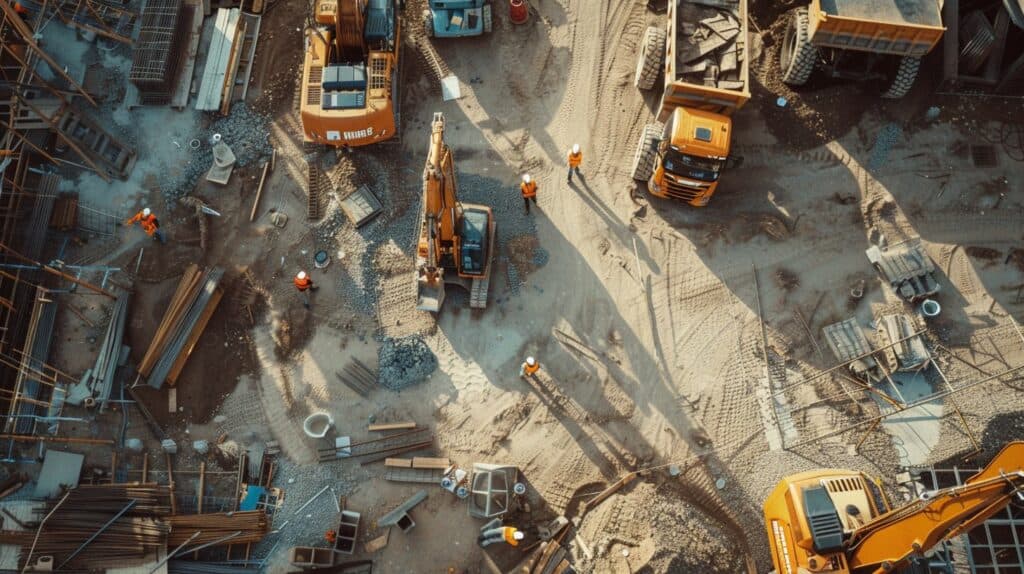
Safety training turns a construction site from a danger zone into a zone of safety. It’s like giving workers a map in a maze, guiding them to avoid traps and reach their goals safely.
Think about it: understanding how to wear hardhats correctly can save someone from head injuries. Knowing the ins and outs of electrical safety can prevent shocking accidents. It’s not just about wearing the right gear; it’s knowing why it matters.
This kind of knowledge slashes the chance of work-related mishaps dramatically.
Let’s talk numbers for a moment—OSHA’s efforts have cut workplace deaths significantly, from 38 down to 13 daily fatalities on average. That’s huge! Safety training plays no small part in this achievement.
Workers learn lifesaving skills like CPR and how to use automated external defibrillators during emergencies. They get trained on recognizing chemical hazards before they turn ugly, something as simple as reading material safety data sheets (MSDS) could mean the difference between health and harm.
Safety isn’t just another item on the checklist; it’s what keeps our boots on the ground and our hearts beating at home after each shift ends.
The Importance of Proper Safety Equipment
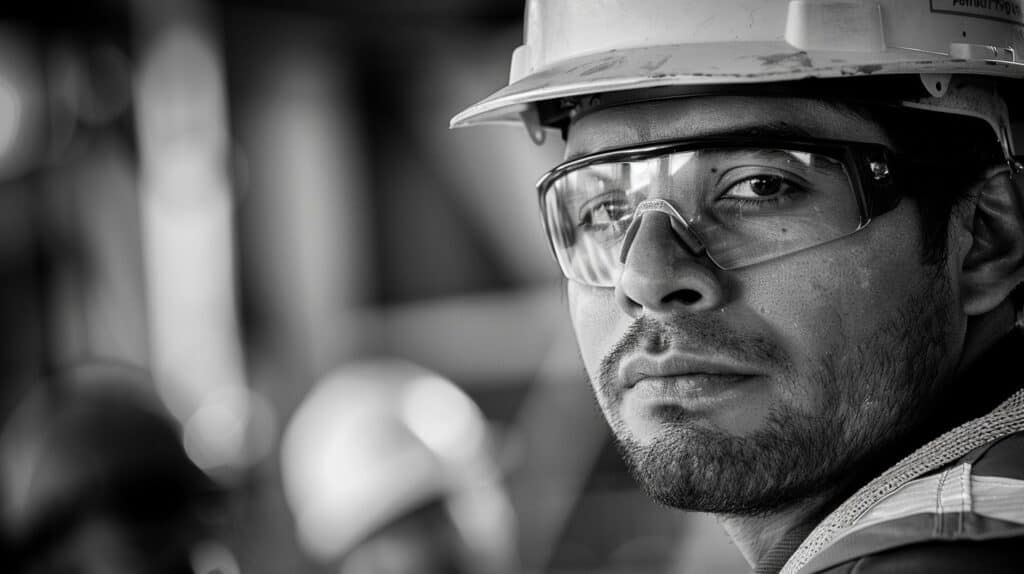
Proper safety gear is a game-changer on the construction site. Think helmets, gloves, and eyewear that shield you from flying debris or falls. These items are your first line of defense against common injuries like cuts, burns, and broken bones.
And with nearly half of all workplace electrical injuries happening in construction, grounding equipment and hazmat suits become lifesavers. They protect workers from shocks and exposure to toxic chemicals.
Wearing the right equipment can literally save your life or keep you from serious harm. For instance, hearing protection prevents long-term damage like tinnitus or hearing loss when working around loud machinery.
On hot days, ventilation masks are crucial for guarding against dust and dangerous fumes that can lead to lung disease or even cancer over time.
Safety gear: Not just an accessory but a necessity.
Prompt Reporting of Safety Incidents
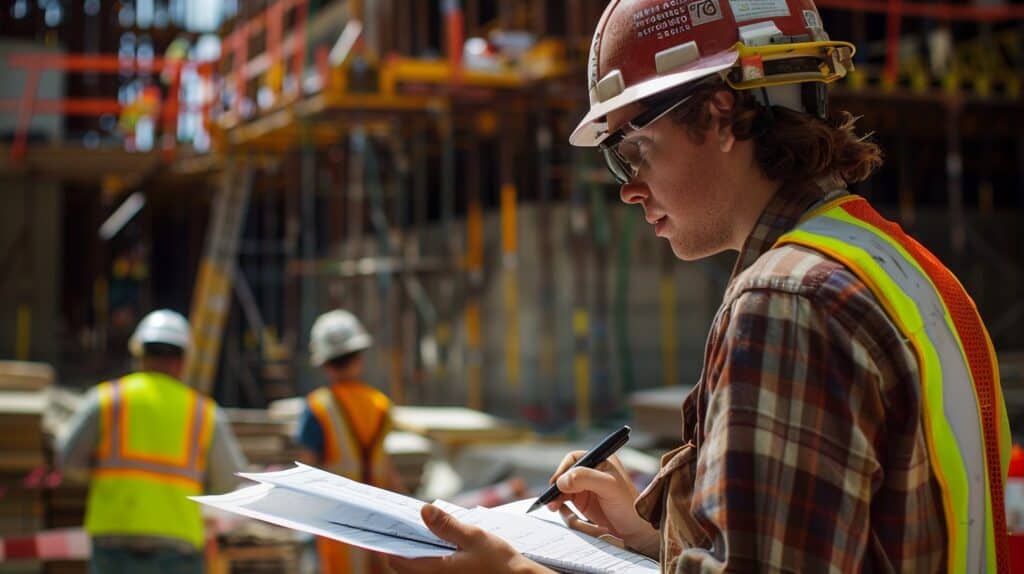
Workers need to speak up fast if they spot danger. If someone gets hurt or something feels off, reporting it right away can prevent a bad situation from getting worse. It’s like seeing smoke and yelling “fire” so everyone can hustle to safety.
In my days on the job site, I saw how quick shouts about loose wires saved us from potential shocks.
Employers must make this easy. They should set up clear paths for employees to report issues without fear. Think of it as having a direct line to the boss whenever trouble pops up.
This setup helps catch small problems before they turn into big accidents, keeping everyone safer and cutting down on work-related injuries. Safety is a team sport; we all play our part by staying alert and speaking up.
FAQs About Construction Safety Tips
What are the top safety precautions for a construction site?
To keep your workers as safe as houses, always wear protective gear, watch out for electric wires like they’re snakes in the grass, and keep the place cleaner than your grandma’s kitchen. Remember, a tidy site is a safe site.
How can we prevent work-related injuries?
It’s simple: think before you act. Use tools correctly – don’t treat a hammer like it’s a toy. And hey, if something feels off, speak up! It’s better to be a chatterbox than silent and sorry.
Why should I care about occupational safety and health?
Because it’s not just about avoiding bumps or bruises; it’s serious stuff, like lung cancer from asbestos fibers or heart disease from too much stress. Keeping safe at work means you get to go home healthy – that’s gold.
Can following OSHA guidelines really make a difference on my construction site?
Absolutely! Following OSHA is like having a superhero guidebook for workplace safety. It helps dodge hazards faster than dodging raindrops, ensuring everyone goes home in one piece.
How does good housekeeping contribute to construction site safety?
Good housekeeping isn’t just for show; it keeps accidents at bay by clearing away dangers lurking around corners – think of it as ghost busting but for risks!
What steps can I take to protect workers from respiratory illnesses on-site?
First off, say no to dust clouds – wet methods or vacuums are your best friends here. And when welding or working near potential asthma triggers? Masks on! Think of them as armor against invisible enemies.
